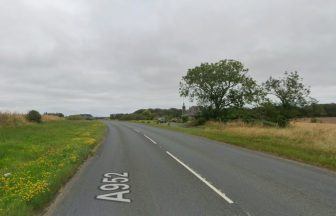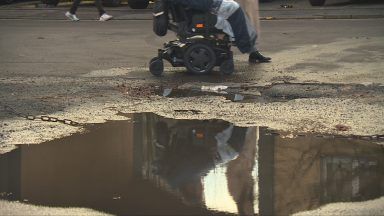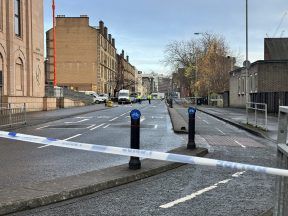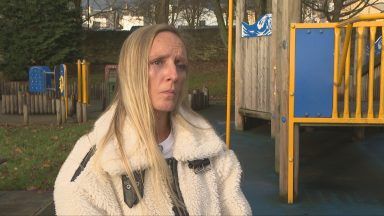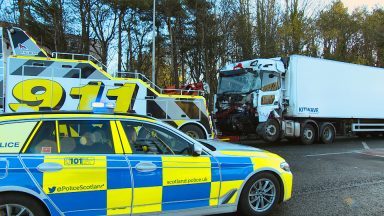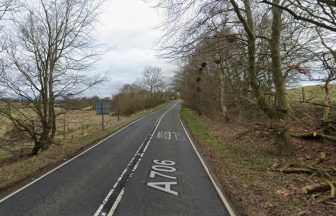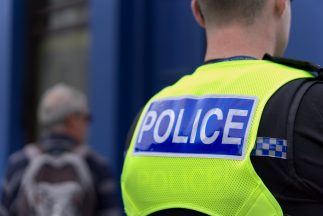The death of a man who was struck by a tram in Edinburgh in 2018 could have been avoided if reasonable precautions had been taken by the tram operator, a Sheriff has ruled.
Bus driver Carlos Hernan Correa Palacio, 53, suffered a fatal head injury when he was struck by Tram 260 in the Saughton area of the capital at about 12.10pm on September 11.
The father of three had been crossing the tramline on a “non-motorised user” crossing near Stenhouse Drive, between the Balgreen and Saughton tram stops, when the crash happened.
The tram stopped a short distance beyond the crossing and an off-duty doctor on board commenced CPR in an attempt to save Mr Correa’s life.
Police officers and Scottish Ambulance Service medics arrived shortly afterwards, but despite their efforts Mr Correa was pronounced dead at the scene about 35 minutes later.
Edinburgh Trams Limited (ETL) was fined £240,000 in August 2023 after admitting a breach of health and safety legislation over the incident in a hearing at Edinburgh Sheriff Court.
A fatal accident inquiry (FAI) into the incident took place at Edinburgh Sheriff Court earlier this year before Sheriff Douglas Keir, whose determination was published on Tuesday.
In it, Sheriff Keir extended his condolences to Mr Correa’s family, saying: “At the outset of the inquiry I extended my condolences to Mr Correa’s family. I wish to formally repeat my condolences to Mr Correa’s family in this determination.”
The document sets out that Mr Correa had moved into the path of the tram while it was about 18m (60ft) away from the crossing, having been “seemingly unaware” of it due to a combination of him not looking and the tram’s bell not being loud enough.
It adds that by the time it became clear Mr Correa was going to walk into the crossing it was too late for the driver to stop the tram.
The report also notes that the vehicle had been travelling at between 61km/h (37mph) and 66km/h (41mph) when Mr Correa first came into view, which was below the 70km/h (43mph) speed limit for this part of the line,
The tram was going at 53km/h (32mph) when the collision occurred.
The determination, which runs to more than 50 pages, states that a number of “reasonable precautions” could have been taken by ETL that might realistically have prevented the incident.
These include making the crossing safer through signage and the addition of bollards or similar to alert pedestrians to the potential danger.
It also pointed to additional signs to warn drivers of the last emergency braking point before an NMU (non-motorised user) crossing, and boosting the “audibility” of tram warning devices.
The determination describes CCTV footage of the moments leading up to the collision.
This shows, the report says, that the driver rang the tram’s bell four times from the point they first saw Mr Correa when he was 73m (around 240ft) away, but that he did not react.
It was not until the driver applied the emergency brake – which automatically sounds a “warning horn” – that Mr Correa looked up, but by then he was just 18m (60ft) away and it was too late.
The determination states that had the horn been used as the “primary mode of warning in off-street areas” in accordance with industry guidance, and had it been loud enough, Mr Correa might “realistically” have heard it at 73m away and been alerted to the approaching tram.
The determination also states that ETL could have performed regular risk assessments of these areas, to ensure the measures remained valid.
The FAI came after an investigation by the Rail Accident Investigation Branch (RAIB), which in 2019 found that the sound pressure levels of the warning bell and horn on Edinburgh trams were below the minimum industry specifications.
Sheriff Keir noted that the recommendations in the RAIB report have now been “fully implemented”, leading to “significant improvements” in safety.
An ETL spokesperson said: “We welcome the findings of this inquiry, and that the Sheriff is satisfied that the extensive measures we’ve introduced since this tragic incident meet the comprehensive and wide-ranging recommendations previously made by the RAIB.
“We have always co-operated with the RAIB and with other investigations to try and prevent a similar accident from happening again on or around our network.
“Providing a safe tramway for the city remains our overriding priority, and we will continue to work with the regulator and the Light Rail Safety and Standards Board to drive continuous safety improvements.
“Once again, we would also like to extend our apologies to the family of Mr Correa and all those affected by this tragedy.”
Follow STV News on WhatsApp
Scan the QR code on your mobile device for all the latest news from around the country


 Police Scotland
Police Scotland

